About the Project
During my 3rd year at Sheridan College I was tasked with designing an original level for an existing game. I chose to make a level for Human Fall Flat because I have been a big fan of how its gameplay blends platforming, puzzles, and hilariously unpredictable physics.
The challenge was to learn the design philosophies of our chosen game and make our level fit right in with any other from the source material.
Final Level Walkthrough
My Roles in the Project
Level Design
Studied the documentation of a games existing tools
Maintained an evolving Level Design Document
Designed a level that matches the gameplay of my source material
Playtesting
Prepared detailed questionaries which ask insightful questions about my level
Level Design
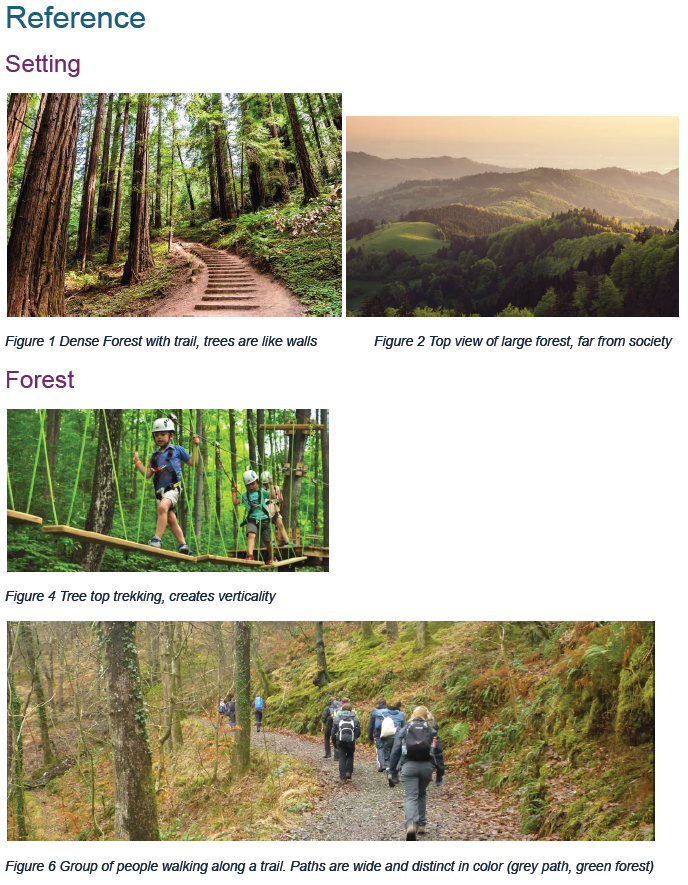
Setting & Forest Reference
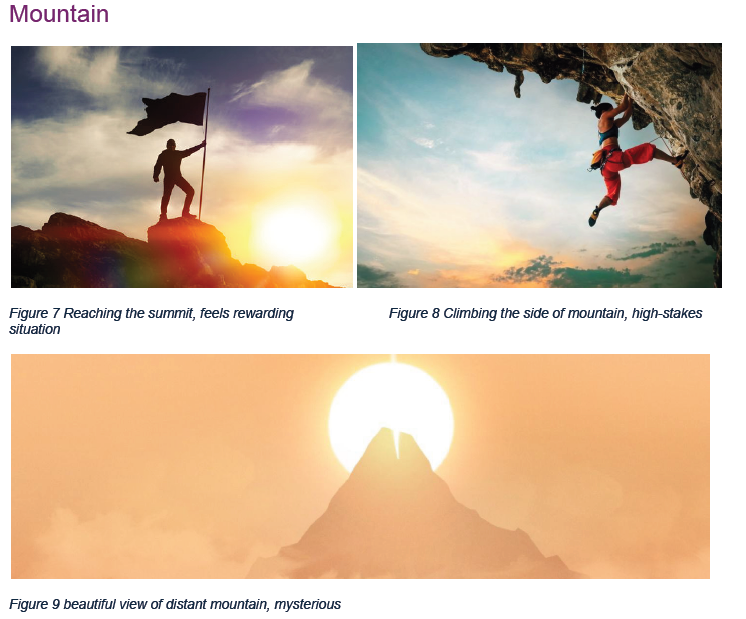
Mountain Reference

Campsite & Cave Reference
References
• I wanted 3 visually distinct regions.
• The forest has lots of greenery, a campsite, and rivers.
• The caves are dark with terrain of fluctuating elevation.
• The mountain is snowy and tall. Climbing it feels climactic.
• Each reference has a caption to describe its purpose
• Progressing through each new region creates a sense of progress
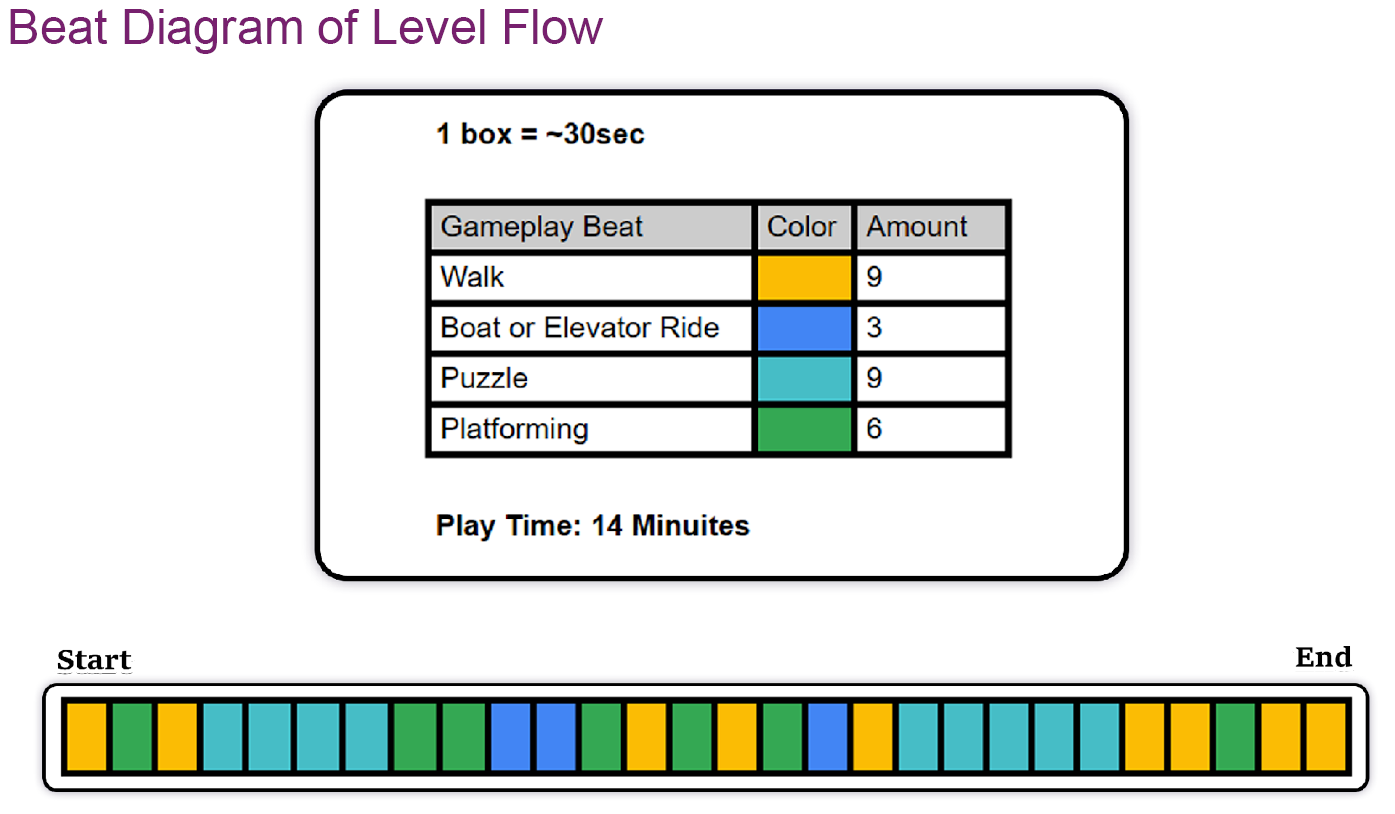
Beat Diagram of Level Flow
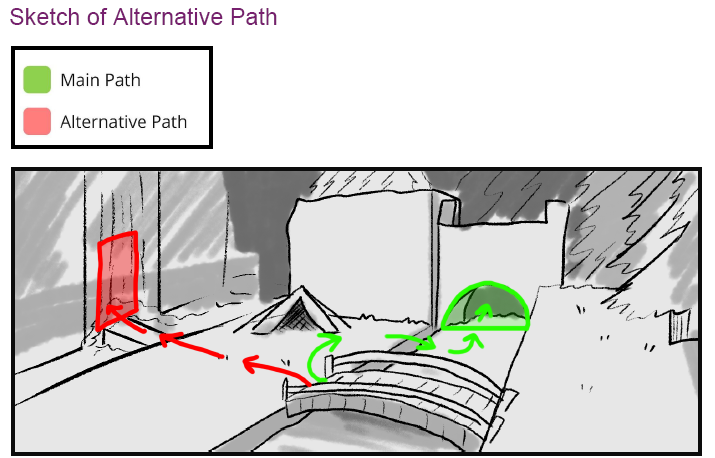
Sketch of Alternative Path
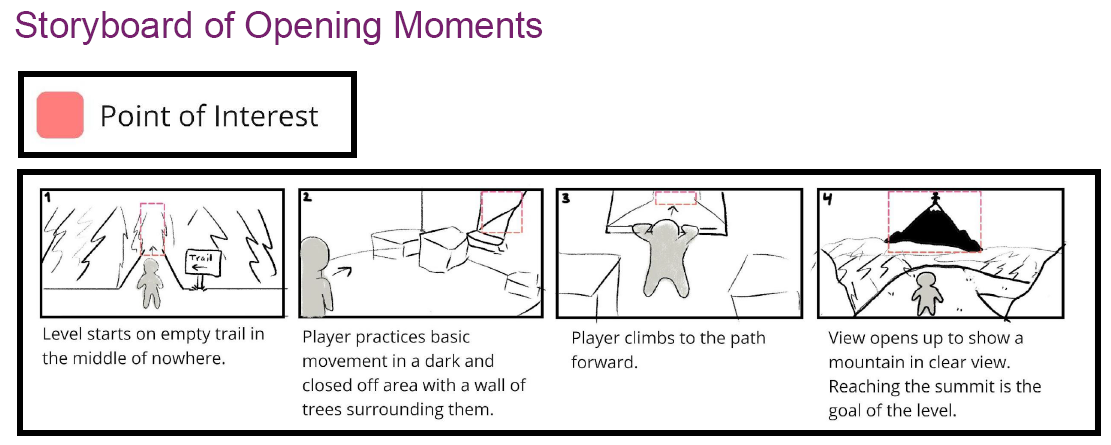
Storyboard of Opening Moments
Diagrams
• These 3 diagrams document important gameplay principals of this level. They are level flow, paths, and elevation.
• Beat Diagram shows the distribution of gameplay elements throughout the level.
• The sketch shows a main path under the bridge and an alternative path behind the waterfall
• The storyboard illustrates the distant mountain elevated to show its importance
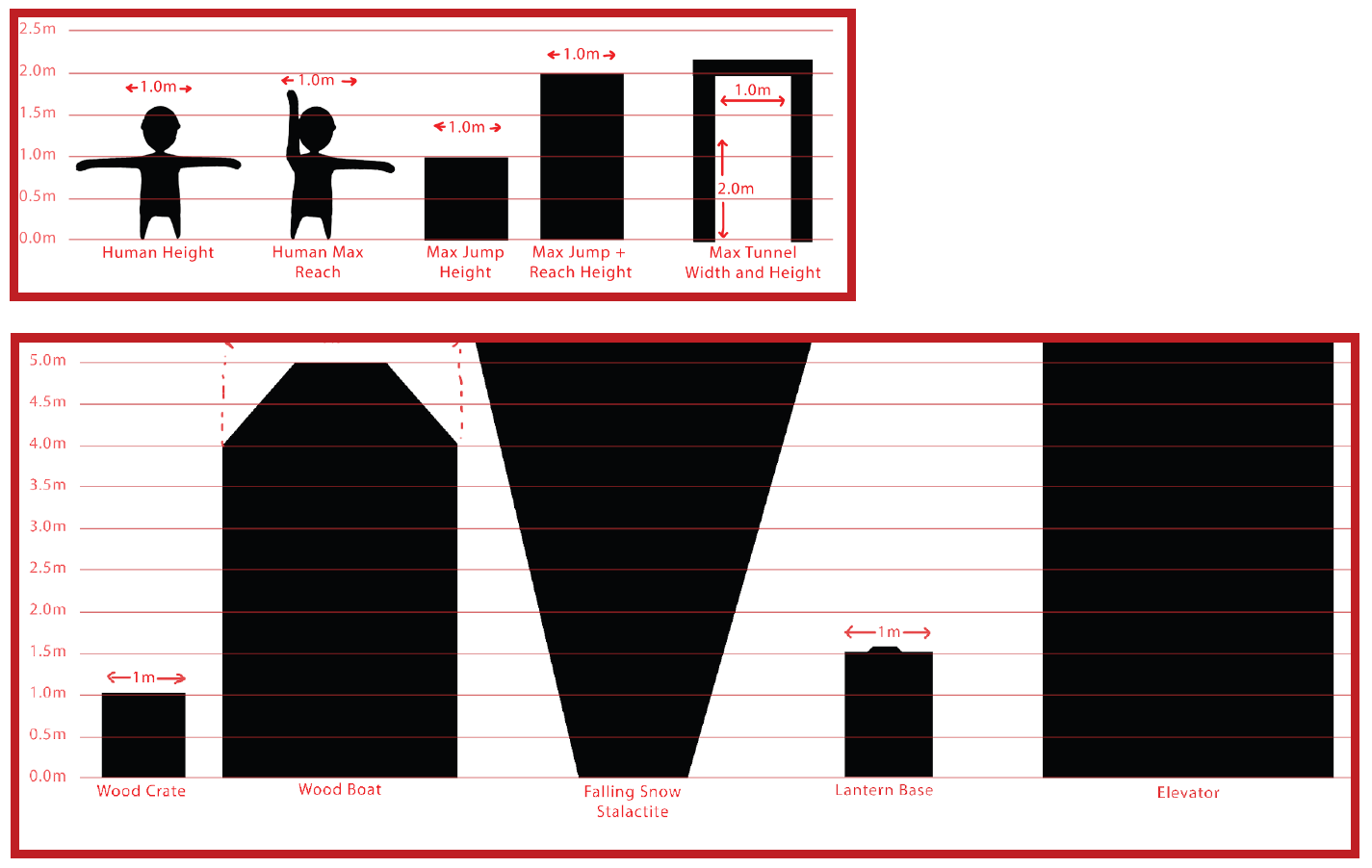
Metrics
Character and Object Metrics
• Documented the metrics of the most used objects in my level
• Knowing measurements for the player characters allows me to scale the level around their capabilities
• Knowing measurements for moving objects like the boat was important for making sure they had enough clearance when floating down the river.
• Gaps and tunnels were never the maximum or minimum metric because it required too much precision which makes navigation frustrating.
Playtesting
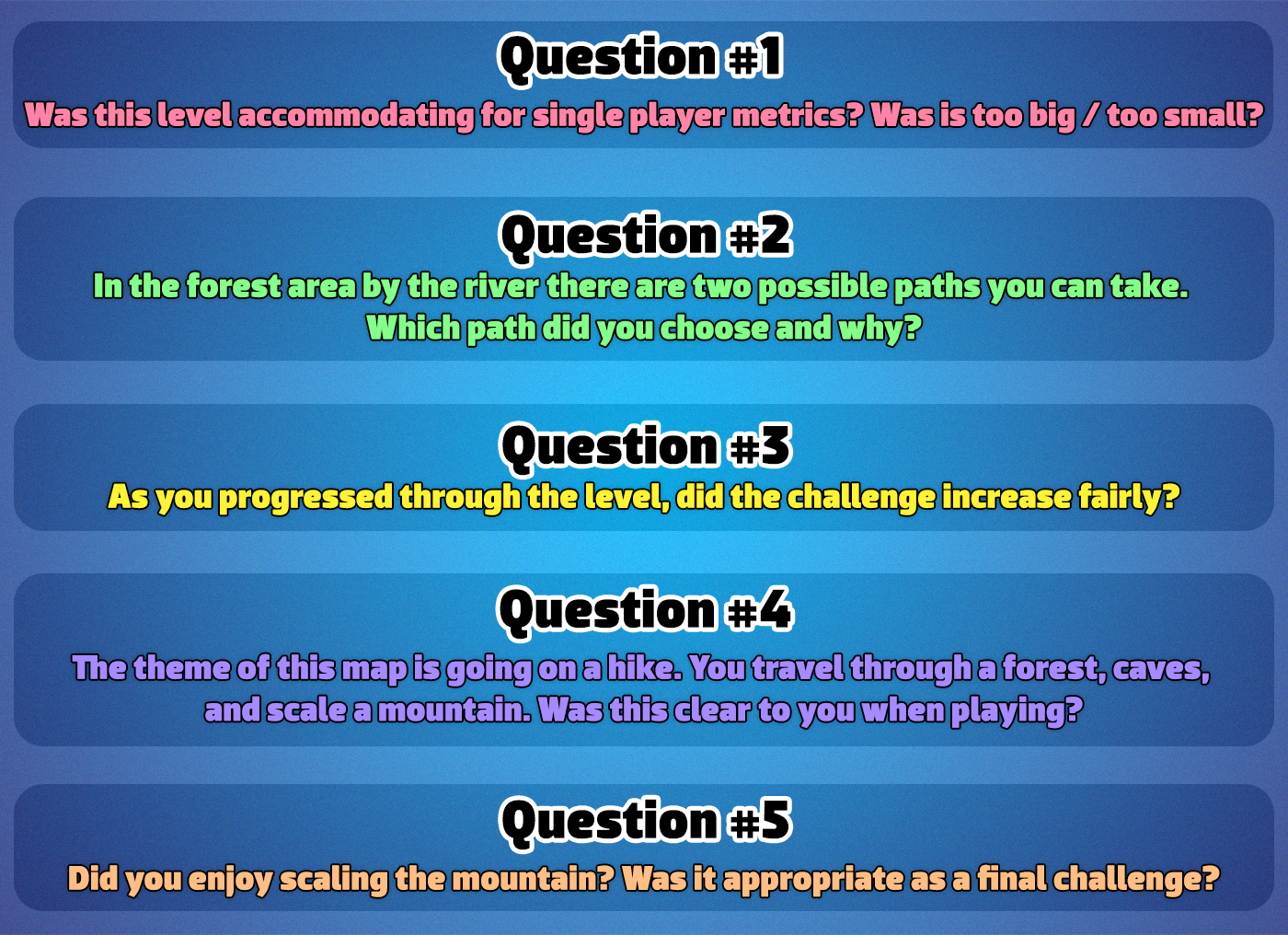
Playtesting
• I created forms with questions about the level for play testers to fill out
• I asked broad questions about the overall experience
• During tests I stayed quiet and noted whenever the tester did something interesting
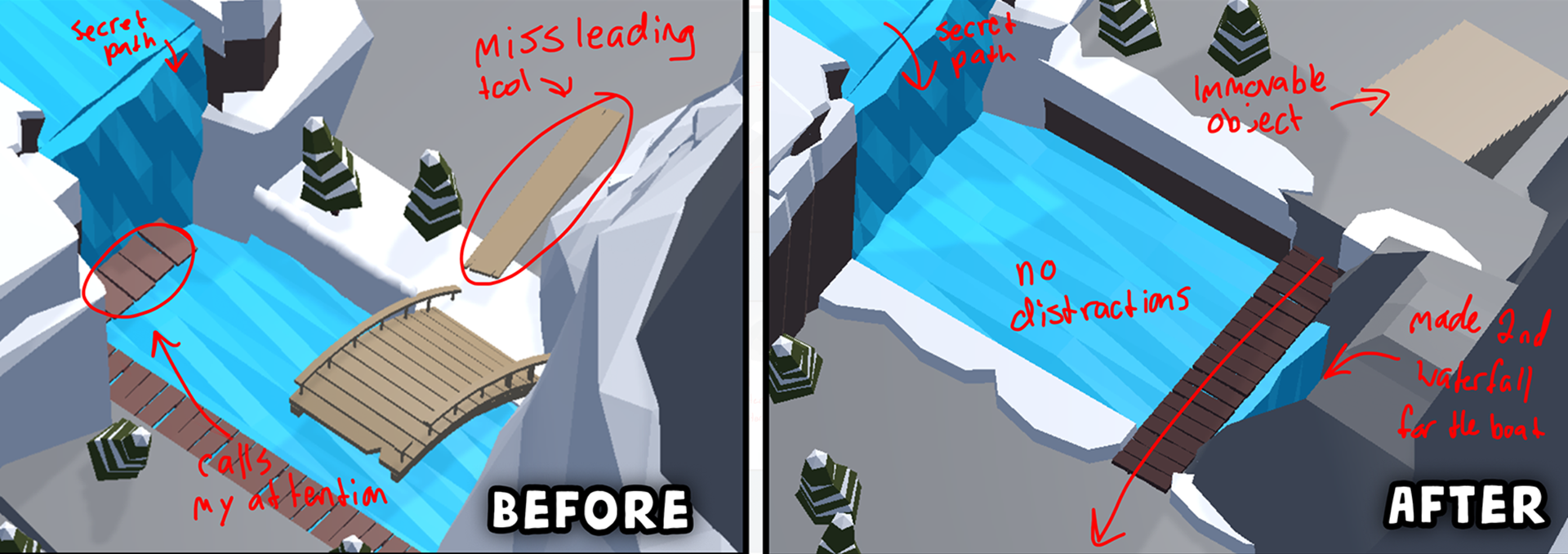
Improving Wayfinding and Navigation

Improving Spatial Composition
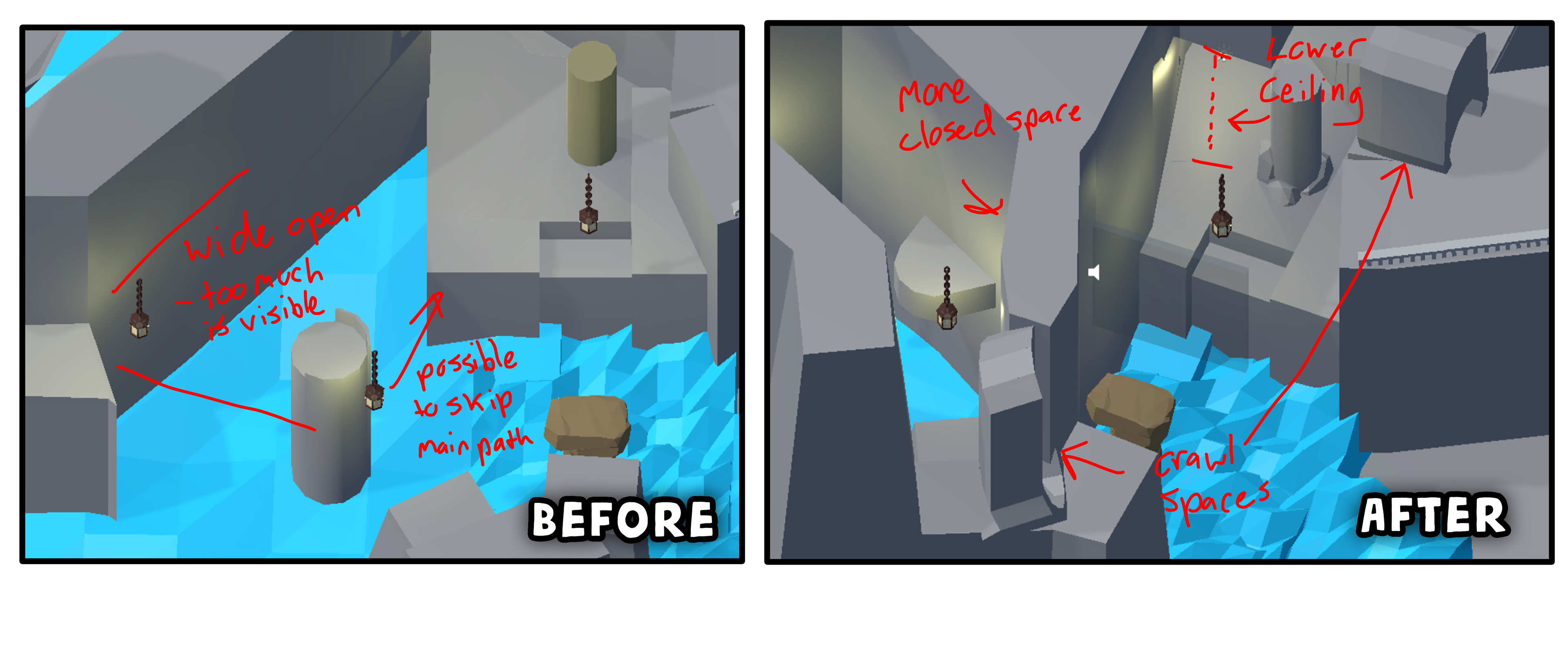
Architecture
Focus Testing
• After receiving focus testing feedback, there were 3 key areas I needed to improve.
Image #1:
• Merging paths caused confusion, tester thought they could climb the waterfall
• Removed the walkway by the waterfall and the bridge was lowered so players don't go backwards by mistake
Image #2:
• Secret path isn't rewarding because its just an empty hallway.
• Now you enter a polar bear's secret cave. The appealing composition of this space makes the walk much more enjoyable.
Image #3:
• The cave is supposed to feel claustrophobic, but I was told it was too open
• I Added more walls to make the room feel smaller, I also lowered the ceilings and added crawlspaces when navigating between challenges.